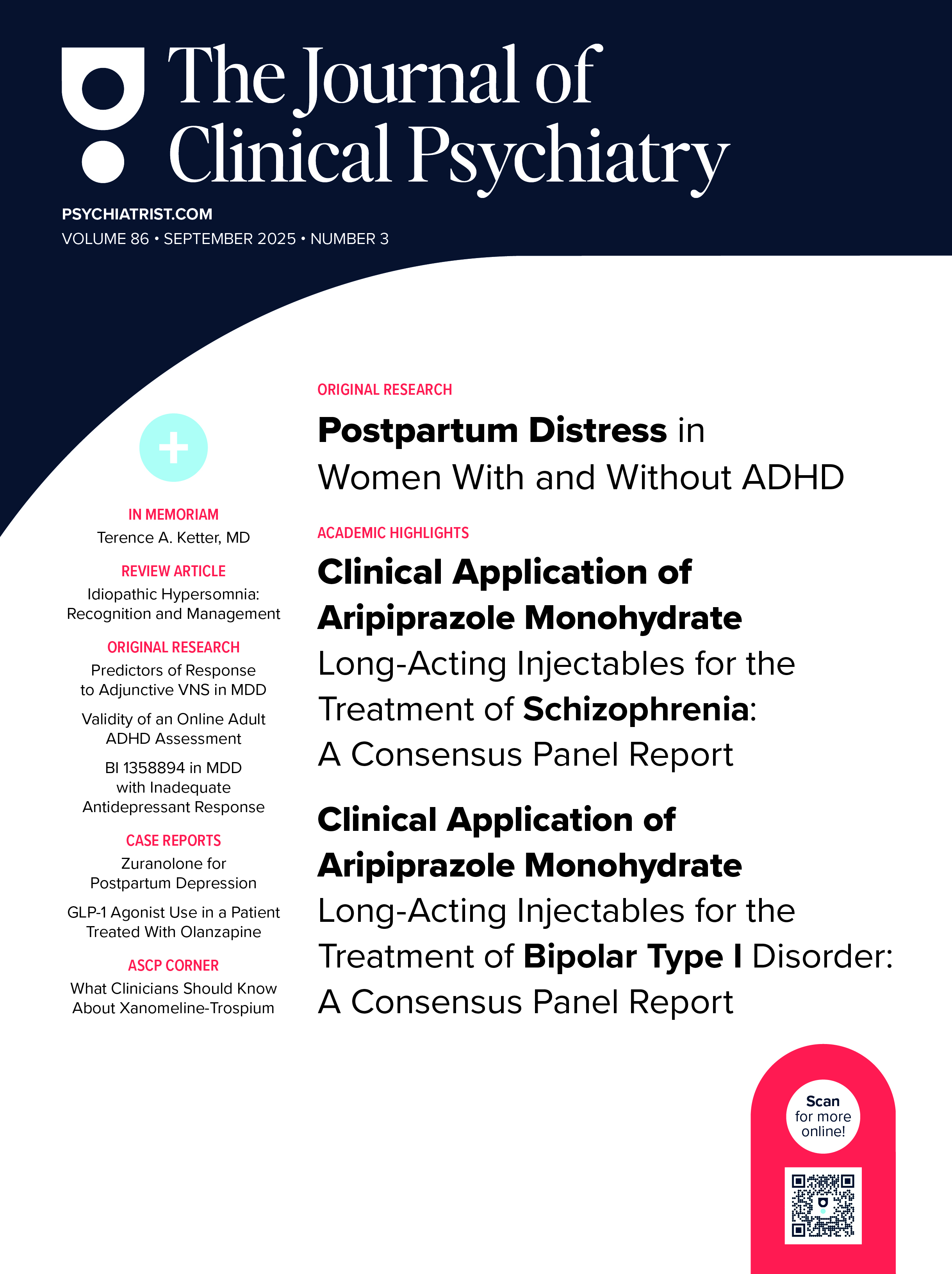Objective: To characterize the diagnosis ofanxiety and depression within a large managed care population andto measure the impact of having both of these conditions ontreatment patterns, health care utilization, and cost. Further,to compare the impact of having both conditions with havingneither or either condition alone.
Method: A retrospective, cross-sectionalanalysis of population-level anxiety-related anddepression-related utilization over a 12-month study period wasconducted. Data were from the Phar Metrics Patient-Centricdatabase, which is composed of medical and pharmaceutical claimsfor approximately 36 million patients from 61 health plans acrossthe United States. Patients 18 years and older were included ascases in the analysis if they had a diagnosis of depression oranxiety during 2002. Four groups were identified based on thepresence of anxiety and/or depression diagnosis: anxiety only,depression only, anxiety and depression, and controls. Controlswere matched to the anxiety and depression cohort using a 4:1ratio, based on patient age, gender, and similarity of healthcoverage. Cohorts were compared with respect to patientdemographics, comorbid diagnoses, medication use, specialistcare, utilization of health care services, and treatment costs,using both univariate and multivariate statistics.
Results: Significant differences in comorbiddiagnoses, medication use, health care utilization, and treatmentcosts existed between the study groups. Specifically, patientswith both anxiety and depression tended to have more somaticcomplaints such as abdominal pain, malaise, or chest pain thanpatients with either condition alone or the control group.Antidepressant use was highest among the anxiety and depressioncohort, while anxiolytic use was as prevalent in the anxiety anddepression cohort as in the anxiety only cohort. Patients in theanxiety only, depression only, or anxiety plus depression groupshad a higher number of anxiety- and/or depression-related visitsas well as visits not related to depression or anxiety than thecontrol group, with the anxiety and depression cohort incurringthe highest utilization of medical services. Similarly, in termsof cost, the disease cohorts incurred significantly higher costthan their control counterparts, with the anxiety and depressioncohort incurring higher cost than those with either conditionalone, even after accounting for differences in patientcharacteristics.
Conclusions: Combination of anxiety anddepression is fairly common in a managed care population asevidenced by diagnosis and treatment. The combination of bothdiagnoses appears to increase the complexity of these patientswith respect to comorbid conditions as well as increases theeconomic cost to payers.
Please sign in or purchase this PDF for $40.00.




